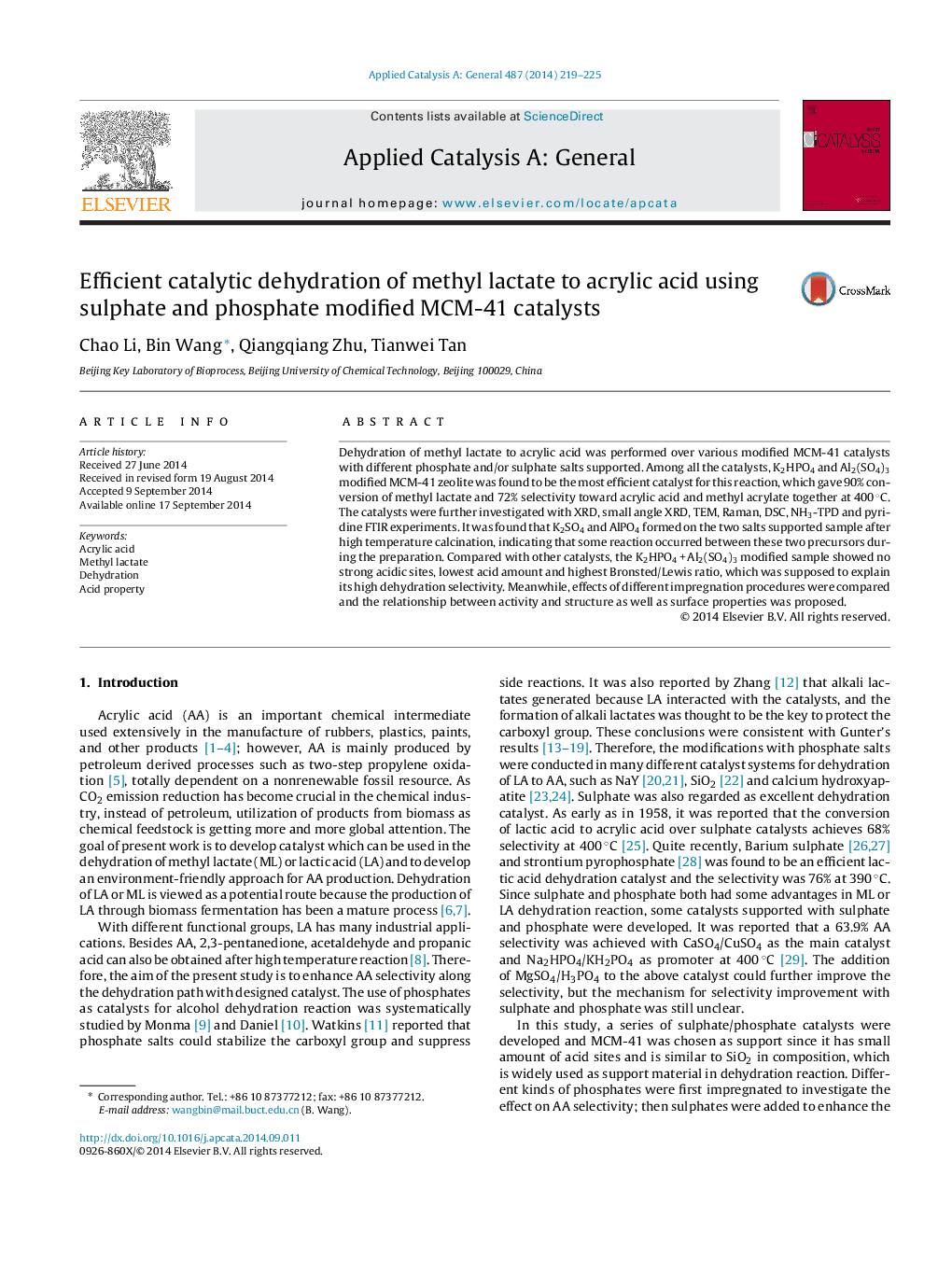| Article ID | Journal | Published Year | Pages | File Type |
|---|---|---|---|---|
| 39481 | Applied Catalysis A: General | 2014 | 7 Pages |
•Al2(SO4)3 addition greatly improve the ML dehydration activity of K2HPO4/MCM-41.•K2SO4 and AlPO4 generate after calcination on the modified catalyst.•Strong acidic sites lead to low AA selectivity.•Low weak acidic density and high B/L ratio account for its high AA selectivity.
Dehydration of methyl lactate to acrylic acid was performed over various modified MCM-41 catalysts with different phosphate and/or sulphate salts supported. Among all the catalysts, K2HPO4 and Al2(SO4)3 modified MCM-41 zeolite was found to be the most efficient catalyst for this reaction, which gave 90% conversion of methyl lactate and 72% selectivity toward acrylic acid and methyl acrylate together at 400 °C. The catalysts were further investigated with XRD, small angle XRD, TEM, Raman, DSC, NH3-TPD and pyridine FTIR experiments. It was found that K2SO4 and AlPO4 formed on the two salts supported sample after high temperature calcination, indicating that some reaction occurred between these two precursors during the preparation. Compared with other catalysts, the K2HPO4 + Al2(SO4)3 modified sample showed no strong acidic sites, lowest acid amount and highest Bronsted/Lewis ratio, which was supposed to explain its high dehydration selectivity. Meanwhile, effects of different impregnation procedures were compared and the relationship between activity and structure as well as surface properties was proposed.
Graphical abstractFigure optionsDownload full-size imageDownload high-quality image (151 K)Download as PowerPoint slide
